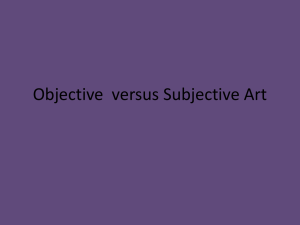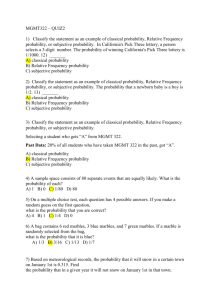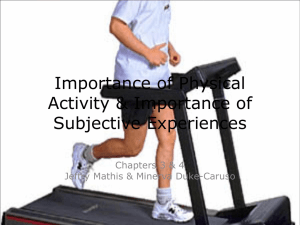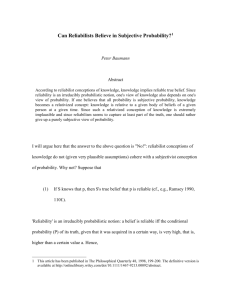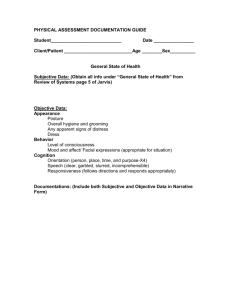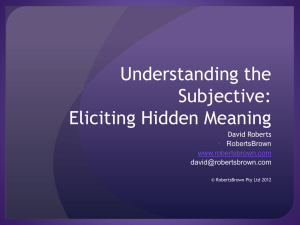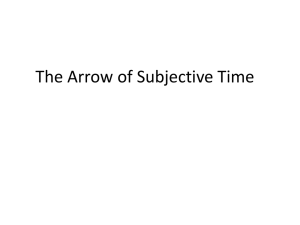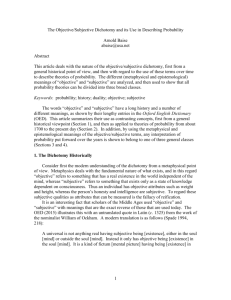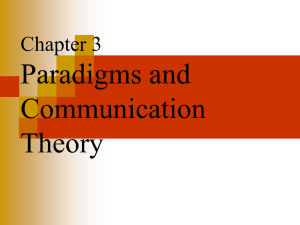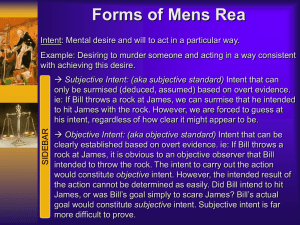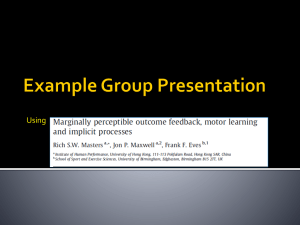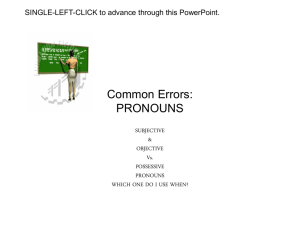AOS1 Lesson 2 - Monitoringandpromotionofphysicalactivity
advertisement
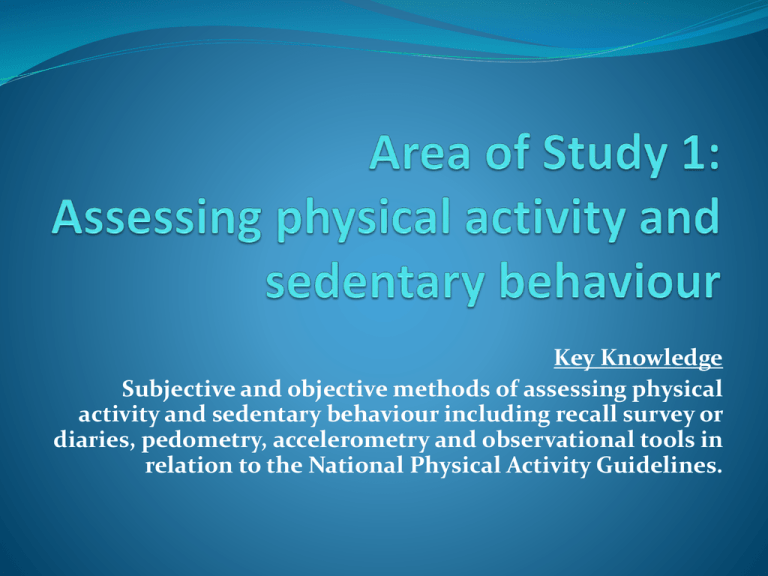
Key Knowledge Subjective and objective methods of assessing physical activity and sedentary behaviour including recall survey or diaries, pedometry, accelerometry and observational tools in relation to the National Physical Activity Guidelines. Subjective and objective methods of assessing physical activity and sedentary behaviour Subjective and objective measures of sedentary behaviours and physical activity Subjective Objective - Rely on a person recalling or remembering which activities they participated in, or recalling their perception of the intensity of the session. Subjective measures are useful for measuring activity levels of large groups and are low cost. - Rely on information presented by another person through direct observation, or from a device like a pedometer or accelerometer. Objective measures remove the disadvantages associated with subjective measures but are much more expensive. Examples: Diary or log, recall Examples: direct oberservation, accelerometer, pedometer Source: Dollman et. al, 2009, as cited in Malpeli, Telford, Whittle & Corrie, 2010) Which method is more suitable for small groups of people? Which method is more cost effective? This task is aimed at students developing their own knowledge about subjective and objectives measures of physical activity. The task will be completed in groups. Each group will focus on one measure of physical activity and present their findings to class. Task instructions are in a Microsoft Word document. Read and discuss the information sheet titled: ‘Appropriate measures for assessing physical activity among population subgroups’ Subjective versus objective assessment Subjective methods of assessing physical activity or sedentary behaviour Involves qualitative or descriptive recall of behaviours Are less reliable than objective More easily administered to population groups and subgroups Include: recall, logbooks, proxy reports and diaries Objective methods of assessing physical activity or sedentary behaviour Involves quantitative analysis or analysis of numerical data Are more reliable than subjective measures of physical activity or inactivity and can be highly accurate Can be expensive or time consuming, and are best suited to individuals Include: pedometry, accelerometry and observational tools Testing your understanding Objective measures of physical activity and sedentary behaviour are more reliable than subjective measures? True/ False Which of the following is an example of a subjective measure? A) Direct observation B) Pedometer C) Keeping a diary D) Accelerometer Which of the following is the least effective measure of physical activity for an 8 year old? A) Recall B) Direct Observation C) Accelerometry D) Pedometry



